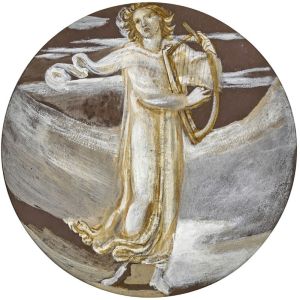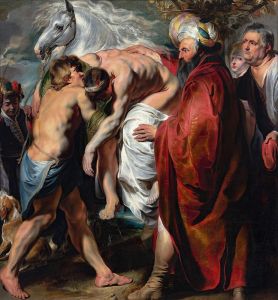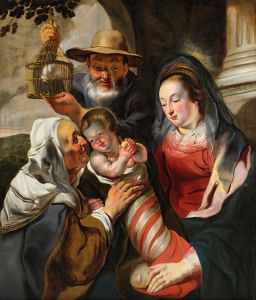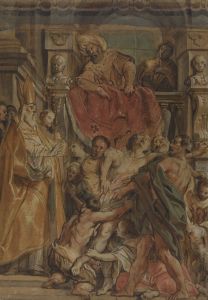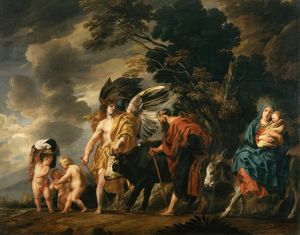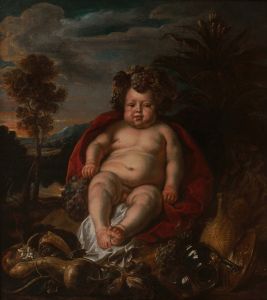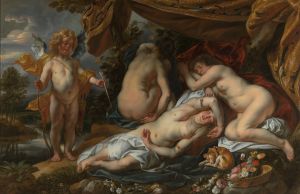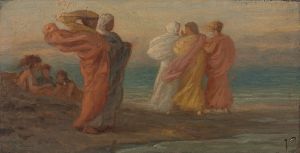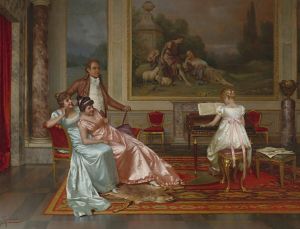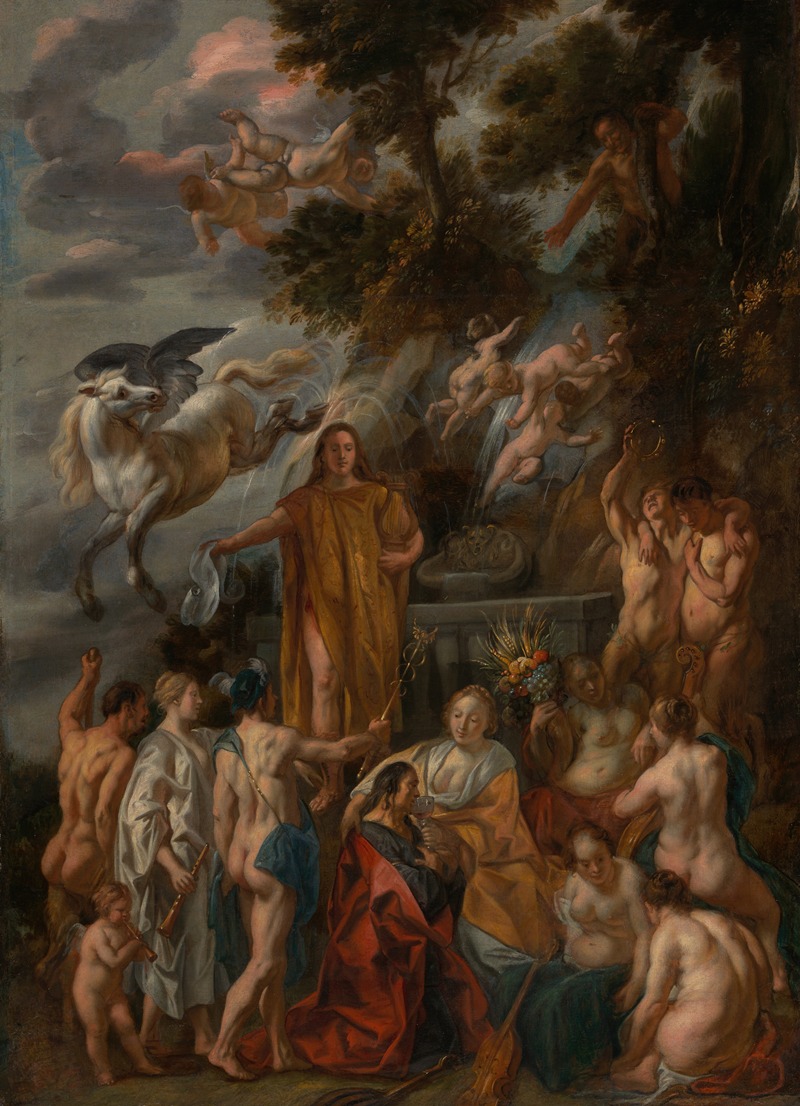
Allegory of the Poet
A hand-painted replica of Jacob Jordaens’s masterpiece Allegory of the Poet, meticulously crafted by professional artists to capture the true essence of the original. Each piece is created with museum-quality canvas and rare mineral pigments, carefully painted by experienced artists with delicate brushstrokes and rich, layered colors to perfectly recreate the texture of the original artwork. Unlike machine-printed reproductions, this hand-painted version brings the painting to life, infused with the artist’s emotions and skill in every stroke. Whether for personal collection or home decoration, it instantly elevates the artistic atmosphere of any space.
Jacob Jordaens, a prominent Flemish Baroque painter, is known for his vibrant and dynamic compositions. One of his notable works is "Allegory of the Poet," a painting that exemplifies his mastery in depicting allegorical themes with rich detail and expressive figures. Although specific details about this painting are limited, it is representative of Jordaens' broader oeuvre and his ability to convey complex ideas through visual art.
Jordaens was born in Antwerp in 1593 and became one of the leading painters of the Flemish Baroque tradition, alongside contemporaries such as Peter Paul Rubens and Anthony van Dyck. Unlike Rubens, Jordaens never traveled to Italy, but he was heavily influenced by the Italian Renaissance and Baroque styles, which he adapted to his own unique approach. His work often featured mythological, biblical, and allegorical subjects, characterized by robust figures, dramatic compositions, and a keen attention to detail.
"Allegory of the Poet" likely fits within Jordaens' tradition of creating allegorical works that explore themes of human nature, morality, and the arts. Allegorical paintings use symbolic figures and narratives to convey deeper meanings, often reflecting the cultural and intellectual currents of the time. In the 17th century, the role of the poet and the nature of artistic inspiration were common subjects of intellectual discourse, and artists like Jordaens would have been well-versed in these themes.
Jordaens' paintings are known for their lively and often humorous depictions of human life. His use of color and light, as well as his ability to capture the textures of fabrics and skin, contribute to the vivid realism of his work. In "Allegory of the Poet," one might expect to find these characteristics, with figures that are both idealized and grounded in reality, embodying the virtues and vices associated with the poetic arts.
The allegorical nature of the painting would typically involve personifications of abstract concepts, such as inspiration, wisdom, or folly, interacting with the central figure of the poet. These figures might be drawn from classical mythology or contemporary iconography, serving to illuminate the poet's role in society or the creative process itself. Jordaens' skill in rendering expressive faces and dynamic poses would enhance the narrative quality of the painting, inviting viewers to engage with its symbolic content.
Jordaens' work was highly regarded during his lifetime, and he received numerous commissions from both religious and secular patrons. His ability to convey complex allegorical themes with clarity and visual appeal made him a sought-after artist in the culturally rich environment of 17th-century Flanders. While "Allegory of the Poet" may not be as widely recognized as some of his other works, it nonetheless reflects the artistic and intellectual milieu in which Jordaens operated.
In summary, "Allegory of the Poet" by Jacob Jordaens is a testament to the artist's skill in creating allegorical paintings that explore the nature of art and creativity. Through his use of symbolic figures and dynamic compositions, Jordaens captures the essence of the poetic spirit, offering viewers a glimpse into the rich tapestry of ideas that characterized the Baroque period.





